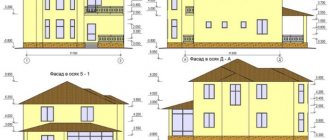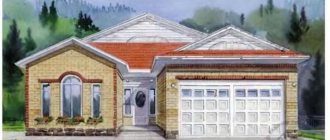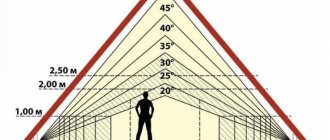The question “What do you want to be when you grow up?” is asked very often in lessons. Moreover, they try to entice a child into one profession or another even during preschool preparation. This idea should not be underestimated. A baby who absorbs everything that surrounds him like a sponge begins to be interested not only in objects, but also in the actions of adults. This is how his idea of himself and his future role in society is gradually formed.
Recently, an incomprehensible but interesting area of business has occupied a special place in the imagination of children.
The guys, who already understand that money is a kind of “language” of people, plan to earn good money in the future. And at the same time work exclusively for yourself. This desire for financial and psychological independence is quite understandable.
How to prepare students for the future?
However, teenagers, as a rule, have a vague idea of how a business project is developed and implemented. In this case, it is important for both the teacher and the parent to explain to the student that entrepreneurship requires serious emotional and material investments from a person. The key to future success is organization, the ability to correctly allocate resources and, of course, knowledge.
Each child initially has unique potential. The fundamental goal of the school and the education system as a whole is to provide opportunities for self-realization of the little person. The correct approach to identifying a student’s abilities will produce not only an intelligent member of society, but also a talented specialist who is sincerely involved in his or her professional field. Design and research activities will help achieve this noble goal.
Your own project: why you can
It so happened that in design, unlike construction, there are no clear requirements for projects or the need to obtain permits.
On the one hand, formally there are SRO (self-regulatory organization) approvals, operating in Russia since 2009. These are mandatory documents that are issued in the form of certificates (previously licenses were used) to carry out activities in the field of construction and design.
On the other hand, there is a list of types of work for which it is necessary to obtain such a certificate. And now the design and construction of country houses does not appear in this list (Order of the Ministry of Regional Development of the Russian Federation dated December 30, 2009 No. 624).
As for the norms of SNiPs and GOSTs, they apply only in the fire safety, sanitary, household and technological spheres. All regulations relating to the architectural design of country houses were abolished (architectural regulations for developers of cottage villages and government customers remained).
Design of country houses is not certified Source geometrium.com
Since there are no regulatory standards or the need to obtain permits, private developers are free to build whatever they want. If you intend to create a project for a country house, the task is further simplified by the fact that GOST standards for the preparation of working drawings are also advisory in nature. That is, you can choose the style of documentation.
Design is a field in which not only private developers, but also builders and students of specialized universities try their hand at it; There are a lot of designers not only specialized, but also related specializations. Design-related specialists have an advantage over people without special knowledge. And, although there are now computer applications for creating a full-fledged project, it is useful for a non-professional to seek advice on some issues.
Levels of calendar charts
When scheduling, a system of distributing schedules by level is used. Usually 4 levels of charts are used. (project manager)
Level 1 schedule:
The first level includes general, non-detailed project plans. Enlarged plans are developed first when starting a new project. Data for schedules is collected during negotiations with the customer; often he has his own key indicators for project dates, stages and final goals. By collecting this data, you can form a general roadmap. Only important key events are included in it. The roadmap is updated depending on the overall duration of the project; if the duration of your project is five years, then it is enough to update the first level schedule once a year. If there are many key milestones in the roadmap, then it is necessary to determine the update period so that at least one key event falls into it. The roadmap can be developed by both the Customer and the Contractor, but in general this responsibility lies with the Customer.
Level 2 schedule:
After the project roadmap has been agreed upon and approved, the stage of detailing to certain stages begins. Basically, the second level schedule is an annex to the agreement between the Customer and the Contractor. The development of a second-level schedule is also the responsibility of the Customer, and is submitted to the Contractor for approval; often the stage schedule is developed by the Contractor based on its resource capabilities. In the second level plan, no special detail is needed; it is enough to follow the sequence of project implementation and generally determine the scope of work for the project. Updated along with the roadmap.
Level 3 schedule:
After concluding the contract, the Contractor prepares a detailed work schedule for the project with a more detailed description of the work within the stage. Those. The general stages of the second level schedule are detailed by type of work. The duration of work is from 2 weeks to a month, depending on the total duration of the project. If the plan is less than a year, then the detailing ends there. Although everything depends on the agreements with the Customer.
Level 4 schedule
Designated as weekly-daily planning. Updating the plan every day, two days, a week, depending on control needs. The most labor-intensive, costly and accurate method of project control. The updated information from the fourth level graph rises up the hierarchy, and based on this information, all upper graphs are updated. Changes at this level can lead to recalculation of the entire plan and to re-coordination of implementation deadlines down to the roadmap.
How to be safe: when you need advice
Land owners who decide to design a house for themselves do so, as a rule, for two reasons. The first is the desire to create a dream home with your own hands; the second is the desire to save money by refusing to invite a professional designer.
Topographic plan of a site of non-standard shape Source stroitelstvoproektirovanie.com
In both cases, you can do the project yourself, and no special knowledge is required for this, if we are talking about a sketch of a house. A thoughtful approach will help determine the location of the building on the site and choose the relative location of residential and technical premises. However, in order for the project to be effective and of high quality, consultation with specialists will be extremely useful in the future.
A professional approach will help correct issues that relate to the architectural or structural part of the project. Communications issues need coordination: electrical, water supply, sewerage. Construction optimization is also best discussed before design begins. A specialist will help you decide on the following positions:
- Select the optimal technologies for constructing foundations, walls, and insulation for the conditions of a specific site and region.
- Select building materials for walls, finishing and roofing.
A specialist will help you select suitable materials Source zodchii.net
A person doing design for the first time does not have the experience and knowledge of a professional behind him, and it is unlikely that all of his decisions will be effective. The consultation will help with several important tasks:
- It will offer the best combination of construction cost and quality (reliability, durability).
- Ensures the maintainability of the structure.
- Optimizes construction duration.
See also: Catalog of companies that specialize in designing country houses
Digital solutions
Several online resources will be of great help to teachers: the School Projects Laboratory being developed by Enlightenment (will be available in the fall of 2021) and Proobskills.
Work in the School Projects Laboratory includes 3 stages:
- The simplest level: a novice designer needs to fill in the empty fields of the template with a theme and bring the work to its logical conclusion;
- The second stage is a little more difficult. Here the child will have to adjust the structure of the project or research himself;
- The third level, where the student creates his own project independently, and the teacher acts as a curator.
The uniqueness of “Proobskills” lies in the provision of checklists to all participants. This methodical and meticulous approach has undeniable advantages:
- The relevance of the research will be justified at the initial stage of work;
- A clear and understandable formulation of the technical specifications, which will simplify the process of its implementation;
- Selection of required literature. During preparation, the child will learn to independently cut off unreliable sources of information;
- Tracking all the nuances of the research process. Using the designer’s checklist, the teacher will see how the work is progressing, what mistakes have been made, where the knowledge base or perseverance was lacking;
- A step-by-step analysis of the progress of work, its adjustment and final protection will enhance the quality of the result obtained.
Preparation for design
Not so long ago, all construction plans and dreams were embodied on paper. Today, the future owner of the house does not have a question about where to do the project, and he gets down to business by choosing a design program. The specialized software on the market is varied; it can be divided into three groups:
- Professional programs, in which it will not be easy to work without knowing at least the basics of architectural design. Products such as ArchiCAD, AutoCAD require installation on a computer; It will take time to master them.
Visual plan of a house with a terrace Source canadskaya-izba.ru
- Unprofessional offline applications. They have different engineering levels, from Envisioneer Express (specializing in creating interior design projects) to almost full-fledged ArCon (Arkon). You can also note Home Plan Pro or FloorPlan 3D.
- Online programs. There is no full-fledged design software in this format. But for solving highly specialized problems (for example, planning), Autodesk Homestyler or floorplanner are suitable.
Simultaneously with choosing and mastering the software, you can do the rest of the preparation:
- Study ready-made projects, abundantly presented on the Internet. Observation is important; it will help you formalize your idea and suggest interesting options for architectural and design solutions.
- Decide on the main idea of the house. Will it be winter or summer, how many people will live in it permanently, what functional areas should be present in it. You also need to choose a style; the choice of materials depends on it.
- Collect all available information about the land plot. Perhaps the features of the terrain will give you an idea on how to draw up a project.
Sometimes choosing a place is not easy Source doverie-omsk.ru
Technology Selection
When choosing, it is better to adhere to the rule: the technology should not be super new, but also outdated. If the technology or framework is new, this may result in problems such as:
- Search for qualified personnel
- Development prospects: in the early stages, development may die or, conversely, if the technology is old, then the bugs will have to be fixed ourselves.
- Lack of ready-made solutions for new ones, and lack of updates for old ones.
This list of problems is relevant not only to technologies, but also to third-party dependencies. All of the above can bury the project on the vine.
Before choosing something specific, think a few times. Create the proverbial benefit table with importance factors for the project.
This example is for a fictitious project:
| Name of the project functionality. | Project importance factor |
| Working with Forms | 3 |
| Routing | 1 |
| Ease of writing animation | 0,3 |
As can be seen from the table, important selection criteria are “working with forms” and “routing”. The ease of creating animation is not essential for this project. Next, we modernize the table by adding new technology columns. In our case there will be two of them.
| Name of the project functionality. | Project importance factor | Technology 1 | Technology 2 |
| Working with Forms | 3 | + | ± |
| Routing | 1 | + | ± |
| Ease of writing animation | 0,3 | + | — |
Based on the data in the table, we understand that “Technology 2” has poor work with forms and routing, and creating animation is like calling Satan. As a result, the share of this technology is 2. You may ask why 2? It's simple! If you put ±, then the specific functionality can be implemented in this technology, but with some “crutches”, or it is more labor-intensive. In our comparison, “Technology 1” will be more profitable, with a total of 4.3. I think explanations on the formation of sums are unnecessary. This table works not only with technologies, but also with everything that requires comparison and selection from a list. The main thing is not to forget that the more criteria you write, the easier it will be for you to make a choice.
Design stages
Design work consists of several stages, which are equally important for obtaining a complete document. And the more detailed and accurately each stage is worked out, the more comfortable life in the house will be.
Choosing a location on the site
Although the land is acquired as a property, it will not be possible to develop it as desired. The location of the house (and other planned buildings) on the land plot is subject to the norms of SNiPs and GOSTs relating to fire safety and sanitary regulations. When working on a house layout plan, you will take into account many requirements: the distance between buildings on the site, the distance of housing from the fence, the location of trees, and others. The following points are also taken into account:
- Location of external utility networks. Internal communications of the house, as a rule, are connected to the electricity supply and the main gas pipeline. In most cases, water supply and sewerage are arranged independently.
- Scheme of access roads. It is important to position the house so that the amount of road work is minimal.
Topography with utility networks Source stroitelstvoproektirovanie.com
Geological exploration
The geology of a land plot is a set of works that allows one to obtain information about the bearing capacity and depth of soil freezing, and the level of occurrence of aquifers. Knowledge of these features allows you to correctly select the type and depth of the foundation.
Geological research is best carried out in the spring, when the groundwater level is at its maximum. It is useful to get to know your neighbors and examine how the foundations of surrounding buildings behave. But you should not focus on the condition of the soil in the adjacent area; It often turns out that the soils have significant differences, and the aquifers are at different levels.
Determining house parameters
At this stage, in order to properly complete the project, you need to decide on the following parameters:
- The area and number of floors of the house, the number and functional purpose of premises.
- Type of roof (gable, hip), type of foundation (strip, pile).
- Materials to be used.
- Architectural concept.
The result of the work should be a preliminary design: sketches of the appearance and layout of the house.
Sample layout of a country house Source geometrium.com
Development of the architectural part
At this stage, structural details are worked out in detail and the layout is clarified. The work is carried out on the basis of a preliminary design, but indicating the exact dimensions of all parts, for the following elements:
- The design of each floor indicating the height, location of door and window openings.
- Roofing and attic project.
- Sectional drawings of the house (contour or architectural). They show the relative location of interior elements, the thickness of walls and ceilings, and elevations.
Domain planning
The subject area here is the set of products and services that should be produced as a result of the completion of the project. Project planning in the subject area includes the following procedures:
- Analysis of the current state.
- Clarification of the basic characteristics of the project.
- Confirmation of project success criteria and problems.
- Analysis of assumptions and limitations that were accepted at the initial stage of the project.
- Determination of project outcome criteria at the intermediate and final stages.
- Building a structural decomposition of this area.
In the process of project life, the elements that make up this area may undergo changes. Work goals and characteristics can be clarified both when intermediate results are achieved, and also at the project development stage.
Briefly about the main thing
Owners who decide to prepare the project themselves must approach the task responsibly. It is necessary to use professional design programs that make it possible to add technical information (sections, axes of load-bearing walls, elevation marks, notes). It is also recommended at each stage to consult with relevant specialists who will help identify and eliminate shortcomings. Otherwise, the builders will not be able to take advantage of the project, and your efforts will be in vain.
Ratings 0
Project time planning
The basic concepts of this parameter: deadlines, duration of work, key dates, etc. The coordinated work of the participants is organized on the basis of calendar plans - design and technical documents that determine the list of project works, the relationship between them, sequence, deadlines, performers and resources. While working on a project, a work schedule is drawn up for the stages and levels of management for the entire life cycle.
Work Breakdown Structure (WBS)
WBS is a graphical display of the hierarchy of project work - the first stage of project scheduling. In essence, WBS is the division of a project into such parts that are necessary and sufficient for planning and effective control.
Drawing up a hierarchical structure requires compliance with the following rules:
- The execution of work at the upper level is achieved through the execution of work at the lower level.
- A parent process can have several child jobs, the execution of which automatically terminates the parent process. But for a child job, there is only one parent job.
- The decomposition of the parent process into child activities is carried out according to a single criterion: either by the resources involved, or by type of activity, or by stages of the life cycle, etc.
- At each level, equivalent child works must be collected. Criteria for identifying their homogeneity can, for example, be the volume and time of work performed.
- When constructing the structure as a whole, it is necessary to apply different decomposition criteria at different hierarchical levels.
- The sequence for the decomposition criteria is chosen so that the largest possible part of the interactions and dependencies between activities is at the lower levels of the hierarchical structure. Works at higher levels are autonomous.
- The breakdown of work is considered complete if the lower-level work is clear to the manager and project participants, the ways to achieve the final result and its indicators are clear, and responsibility for the work is clearly distributed.
Based on the WBS, a list of project works is created. And then the sequence of their implementation, relationships using organizational and technological models and the duration of the work are determined.
Duration of work
The duration of work is determined on the basis of standards, on the basis of personal experience (when there is an example of similar work), on the basis of calculation methods for project planning. Such methods include, for example, the PERT event analysis method, used when there is uncertainty in estimating the duration of operations. There are, however, different ways to manage project time.
PERT
The method is considered as a weighted average of three types of forecasts: optimistic, expected and pessimistic. After establishing the duration for each forecast (using a formula and/or involving experts), the probability of each forecast is calculated. And then the values of each of the forecasts and their probabilities are multiplied, and the values are added.
Network diagram
A network diagram is a graphical display of activities and dependencies between them. More often it is presented in the form of a graph, the vertices of which are the design work, and their sequence and interrelationship is demonstrated by connecting arrows.
Gantt charts
This is a horizontal chart showing project work in the form of segments, oriented according to the calendar. The length of the segment corresponds to the duration of the work, and the arrows between the segments indicate the relationship and sequence of work.
In addition, in each project, work is optimized according to time criteria, and schedules are approved. The general goal of methods when planning project time is to reduce the duration of the project without losing the quality of its components.
Fourth step. Making a prototype
To avoid wasting a lot of time and effort on a product that no one needs, check whether you understood everything correctly. Even after communicating with the client and clarifying the requirements, questions may remain. If there are no questions, this does not mean that you understand what the client wants. How can I check this? Show the customer your vision of the project.
- We are preparing a visual diagram of the product: electronic version or on paper. We don’t concentrate on design, structure is important here.
- We focus on the user-friendliness of the future product’s interface.
- We show the result to the client. He adds comments.
This is what a website prototype looks like with client comments. Source.











